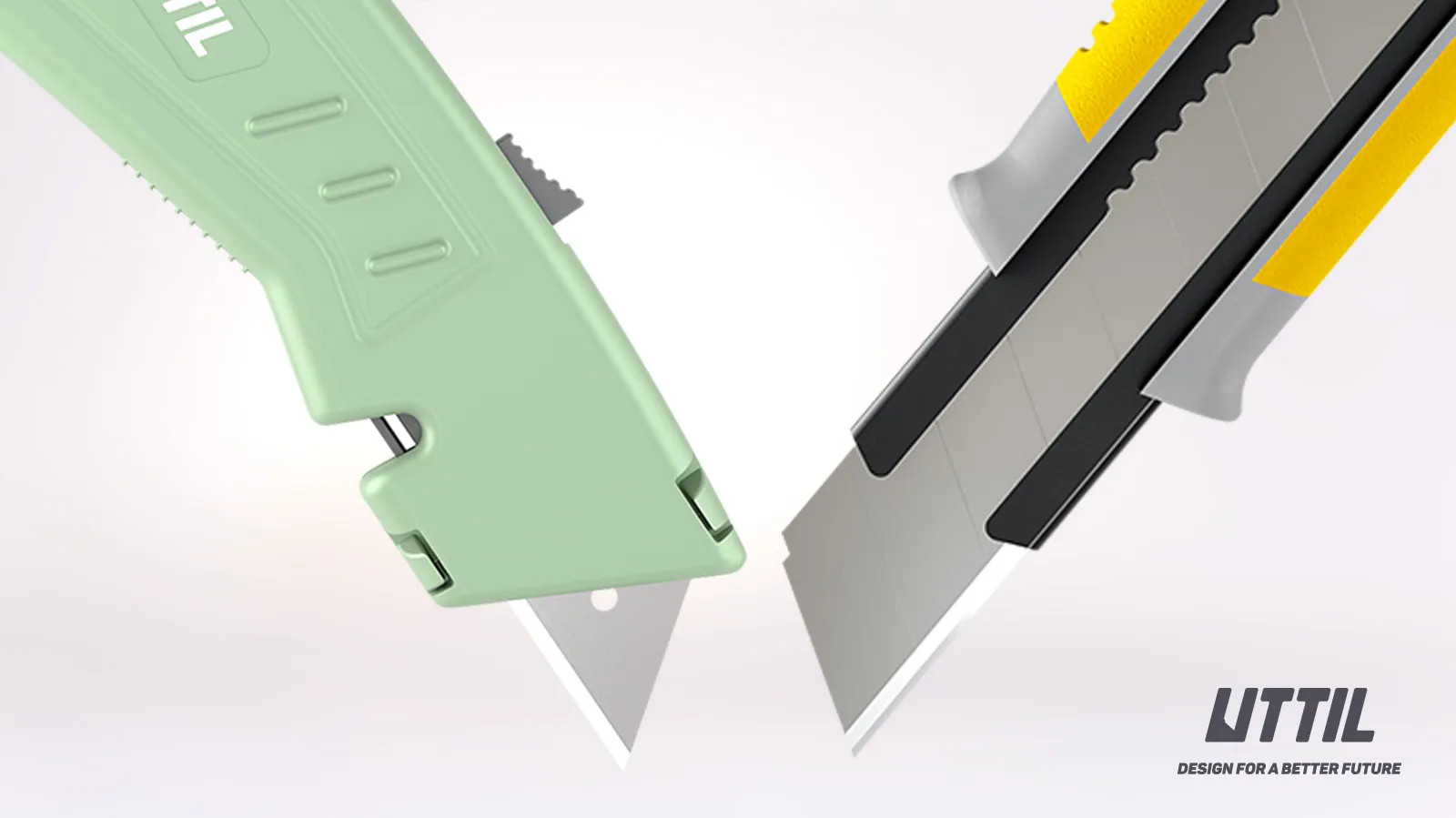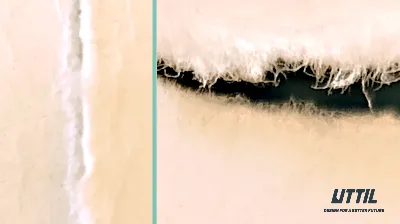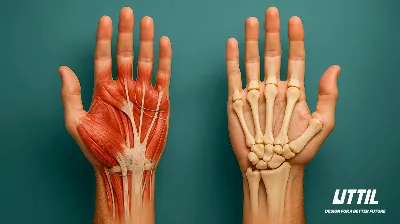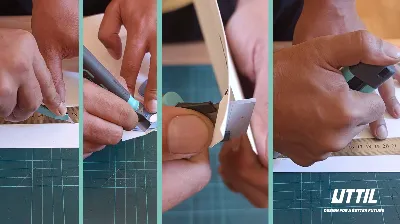Choosing the Right Blade for the Job: Snap-Off vs. Trapezoidal Blades
The blade is where the magic happens
in utility knives. The two most popular blades are snap-off and trapezoidal
blades, which are preferred according to the area of use.
Flexibility of
Use of Snap-Off Knives
With
their long, segmented design, clip-and-throw knives offer a unique advantage:
as the edge dulls, the user can snap off the tip to reveal a new, sharp piece.
This function makes snap-off blades attractive for jobs that require
uninterrupted sharpness.
The Advantages of
Snap-Off Knives:
Continuous Sharpness: Breaking
off a blunt segment for a new edge reduces downtime, increasing productivity,
especially in fast-paced environments.
Cost Effectiveness: Thanks to
their multi-segment design, these blades potentially outlast their counterparts
in situations where the job doesn't tax the blade's strength too much.
Versatility: Snap-off
blades are versatile and ideal for precision tasks in the graphic design, craft
and light packaging industries.
Limitations:
Structural Integrity: These
blades' segmented nature means they may need to hold up better on heavy-duty
jobs. The fact that they can only work correctly by ejecting one segment at a
time creates difficulties when deeper and more controlled cutting is required.
They may not be suitable for work that can be done with more than one segment
sticking out and may break under load if misused.
Waste Generation: Each
breakout operation generates waste. This can lead to increased waste in
high-volume environments. However, blades made from a long life and suitable
steels (Solingen steels, Japanese SK5, SK2, etc.) can minimise this effect as
they can cut 10 to 50 times more than blades from ordinary spring steel (such
as CK75).
Trapezoidal
Blades: Robust Performance,
Trapezoidal
blades are the workhorse of utility knives. Their thick and robust design
allows for heavy-duty use, cutting through more rigid materials quickly. Unlike
snap-on blades, trapezoidal blades are replaced rather than adjusted when
dulled, ensuring maximum durability for every task.
Advantages
of Trapezoidal Blades:
Durability: These
blades can handle rigid materials, from stiff cardboard to flooring, because
they are designed for heavy-duty use. They outperform even CK75-grade steel for
cuts such as paper and cardboard. However, blades made from better steels
should be preferred if cutting more demanding materials other than paper and
cardboard.
Safety: Trapezoidal
blades are robust and have less risk of breakage during use. This makes it a
safer knife class for heavy-duty applications.
Precision: Despite
their robustness, trapezoidal blades do not compromise precision, making them
suitable for detailed jobs requiring more power.
Limitations:
Sharpness Maintenance: Unlike
folding blades, a trapezoidal blade can be used on both sides, front and back,
without losing its sharpness. Blunted blades are usually used with a blade
carrier mechanism in a screw body, so blade refresh time is longer.
Less Flexibility: Lack of
immediate access to a new edge means that users are likely to work with a
duller blade for longer than is ideal, potentially compromising cutting
efficiency, quality and safety.
Best Uses in
Industrial and Creative Applications
Snap-Off knives excel in environments
where precision and the ability to maintain a consistently sharp edge outweigh
the need for coarse cutting power. Graphic designers, artists and artisans find
these blades ideal for precise and detailed work.
Trapezoidal
Blades are better suited for construction, manufacturing and heavy-duty DIY
projects. Thanks to their strength and durability, they are favoured for
cutting hard materials where precision is required. However, the quality of the
blade must be selected strictly according to the task to be performed.
Heavy-duty tasks require a blade that can withstand severe pressure.
Conclusion
The
choice between snap-off and trapezoidal blades depends on the specific
requirements of the task at hand. The snap-off blades are unrivalled for those prioritising
flexibility and sustained sharpness without needing heavy-duty cutting power.
In contrast, trapezoidal blades excel in tasks requiring durability and the
ability to cut through more rigid materials with precision and safety.
Understanding
the strengths and limitations of each blade type enables users to maximise
their productivity, safety and the quality of their work, whether in industrial
environments or creative projects. As with any tool, the right choice
enhances the craft and the pleasure of working.








